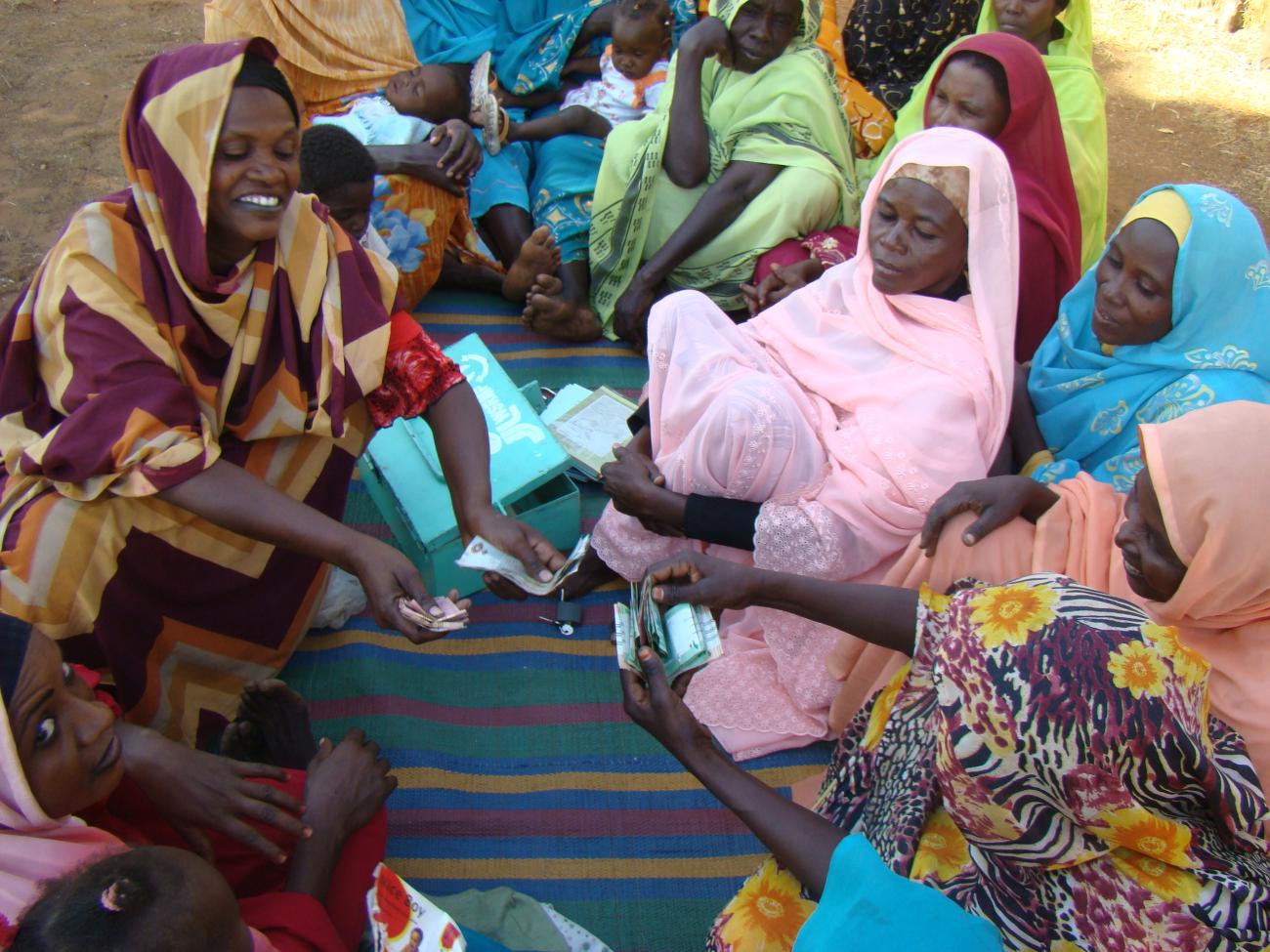The Kordofan region in Sudan is home to an abundance of natural resources. Nevertheless, poverty has been prevalent in the region particularly for populations living in rain-fed areas given that agricultural production depends on seasonal rainfall. Rural women are among the poorest in the region, facing a multitude of challenges. Given the lack of access to education and position to have a voice in the running of their families or their communities, women are left out of opportunities to earn livelihoods.
Ayeshah Abdullah was a subsistence farmer financially dependent on the various crops she grew in her home garden (Jubraka) and had no regular income to serve as collateral to apply for a small bank loan to start a small business. Ayeshah’s life changed when a microfinance facility made it possible for her to take a loan to expand her farming business by buying hibiscus seeds.
“Micro-loans helped me become a farmer on my own and now I don’t have to work for other people who pay me a minimum wage” says Ayeshah Abdullah.
The microfinance scheme, serving Ayeshah and almost 30,000 other women like her, started when extension field staff were seconded by the Sudanese Government to work with the Western Sudan Resources Management Programme (WSRMP) – a project financed by IFAD in the Kordofan region. With knowledge of local customs and practices, these seconded staff emerged with the idea of using “Khata”, an indigenous practice of pooled savings used as microfinance funds managed by women for women. The Khata financing is traditionally maintained through regular contributions of savings deposited by a group consisting of 7-20 women. In areas where banking hardly reaches rural areas, Khatas became central to women’s financial management and empowerment.
The WRSMP Project helped the traditional Khatas to quickly evolve into Women Savings and Credit Groups by training key persons in the groups on how to evaluate loans, undertake simple feasibility studies for microbusinesses, book keeping and groups management. The initiative focused on working with the women groups’ leaders to oversee the fund’s microbusiness investments portfolios. The groups became linked to microfinance by initiative of the Agriculture Bank of Sudan through a memorandum of understanding signed with the Ministry of Finance and Economic Planning to scale-up financing for rural women in Kordofan. The memorandum of understanding established the Agricultural Bank of Sudan Microfinance Initiative, which as of 2017 covers 323 villages reaching around 30,000 members through 1,800 women groups.
Loans of the Agricultural Bank of Sudan Microfinance Initiative offer amounts between US$150 and US$1,200 for microfinancing. So far, almost 100 percent of the loans have been repaid. If there is a default on a loan, other group members step in and pay for them. A condition of the loan is that members reserve monthly savings to be used as collateral for the loans.
“We are promoting a culture of savings amongst the groups to develop their communities” says Rehab Ehaj Moammed Nour, who is a credit officer of the initiative.
Many women like Ayeshah are finding a voice through village-level credit groups. Ayeshah now not only farms hibiscus, but also sells at her own market store directly to local merchants.
“Women previously sat on the sides of community meetings, and now because of this financial empowerment, we sit together with the men to discuss community issues” says Ayeshah.
In the coming years, hundreds of thousands of more women will have the opportunity to grow their businesses and take their place next to men in their communities. Loans of this initiative are aiming to reach over 1 million women by 2025, giving more women like Ayeshah opportunities they never had before.



